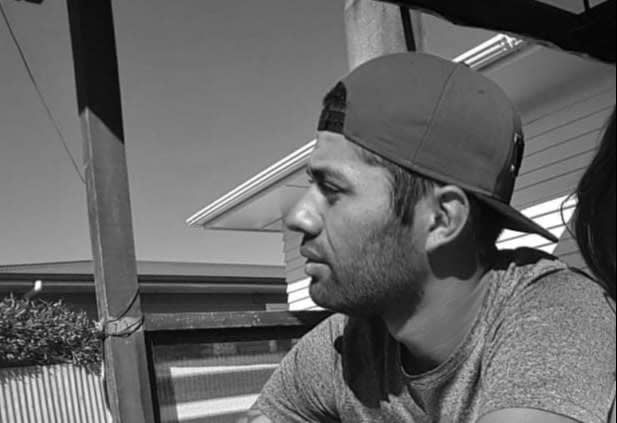Family’s Case Over Forest Worker’s Death Fails

Rebecca Macfie
Rebecca Macfie is a leading investigative journalist, and the author of Tragedy at Pike River Mine (Awa Press, 2013; updated edition 2021), and Helen Kelly: Her Life (Awa Press, 2021), longlisted for the best book of non-fiction at the 2022 Ockham New Zealand national book awards.
Newsroom
A rare private health and safety prosecution over the death of a young Ngāti Porou forestry worker has been dismissed by the court, reports Rebecca Macfie
Seven years after Niko Brooking-Hodgson’s violent death on steep, slash-covered forestry site in Hawkes Bay, a District Court judge has dismissed health and safety charges brought by his whānau against the logging company that employed him.
As Judge Geoff Rea heard in the Napier District Court in August, Brooking-Hodgson was killed by a 9 kg steel shackle attached to a haulage cable that sprung free from a snag in the clear-felled terrain, and came up the hill at him, swishing from side to side.
The 24-year-old Ngāti Porou father of one was struck in the head and chest, and died at the scene of catastrophic injuries on August 22, 2016.
Although still a young man, he was an experienced and safety-conscious forestry worker, who was employed as head breaker-out by his employer, D G Glenn. Breaking out – attaching felled trees to strops to be pulled up to a landing site – is one of the most dangerous jobs in an extremely dangerous industry.
At the time he was killed, Brooking-Hodgson and his crew-mates were undertaking a task called line retrieval, in which the rope is wound in by the hauler machine so that it can then be shifted to a new position.
The question before the court was whether D G Glenn Logging had failed in its duty under the Health and Safety at Work Act to keep its workers safe as far as “reasonably practicable”. In particular, the prosecution argued that it should have refrained from keeping pressure on the haulage rope until there was confirmation that Brooking-Hodgson and a trainee worker – just four days into the job – were in a safe place. It also argued D G Glenn should have had a protocol for clearing an obstruction during line retrieval.
In the end, the case came down to one man’s word against another.
One was the trainee – a shearer who had decided to try working in forestry – who was working alongside Brooking-Hodgson on the hillside and was closest to him when he was hit. He gave evidence that Brooking-Hodgson and the hauler operator were communicating over the radio telephone about the snagged rope in the moments before the accident.
The other was the hauler driver, who was operating his machine on the landing site 329m away, on the other side of the harvested valley, from where he was unable to see the two workers.
Both men were called by the prosecution to give evidence.
The trainee told the court he heard Brooking-Hodgson tell the hauler driver over the RT to slacken off the rope so that he could go and inspect the cause of the snag. Brooking-Hodgson then did so, going down the hill and entering what’s known as the ‘bight’ – the angle between two parts of the rope running around a block, and known as a dangerous position.
In contrast, the hauler driver told the court that the last word he heard over the RT from Brooking-Hodgson was the instruction to begin the process of line retrieval by putting the shackle onto the rope. He said that he heard nothing from Brooking-Hodgson regarding the snagged rope.
The evidence of the trainee worker was key to the prosecution’s case. He told the court that he had suffered badly from anxiety, panic attacks and insomnia as a result of Brooking-Hodgson’s death. He was in the thick of this struggle when he was interviewed by WorkSafe about two weeks after the accident, and just wanted to get out of the room. To cut things short he had told the inspector he hadn’t heard any communication between Brooking-Hodgson and the hauler operator, when in truth he had.
The prosecution case was that Brooking-Hodgson told the hauler operator to slacken the rope so that he could go down the hill and inspect the cause of the snag, but that the operator had failed to comply, leading to Brooking-Hodgson’s death. It argued that Brooking-Hodgson was conscientious about safety, and would never have gone into the bight of the rope if he hadn’t first had confirmation that the rope would be slackened.
It argued that the hauler operator was an agent of D G Glenn, which was therefore responsible for the health and safety failings that caused the fatality.
In closing submissions, prosecution counsel Fletcher Pilditch KC – who acted pro bono for the Brooking-Hodgson whānau – urged Judge Rea to accept the trainee worker’s evidence, and reject the hauler operator’s.
But Judge Rea refused to do this. This appears to have come down to a quirk of criminal law, which prohibits the prosecution from cross-examining its own witnesses. This meant that the hauler operator was not questioned or given the opportunity to respond to the trainee’s evidence, which directly contradicted his own.
Judge Rea took a dim view of this, calling it “extremely unfair”.
“I am being asked to reject [the hauler operator’s] evidence when he was never given the opportunity to address what [the trainee] said and was never alerted to the fact that his evidence on this point was being rejected by the party that called him and without knowing it would be alleged that his failure to follow Mr Brooking-Hodgson’s instructions were the direct cause of the fatality. I am not prepared to do that,” wrote Judge Rea in his decision.
As to the prosecution allegation that D G Glenn had failed to undertake hazard identification of the line retrieval task, Judge Rea said “on the contrary, I consider the defendant had robust and comprehensive systems in place to deal with this type of activity but for some reason they were not followed.”
The failed prosecution is a severe blow to the Brooking-Hodgson whānau, who filed a rare private action under the Health and Safety at Work Act after years of fighting to clear their son’s name, who they feel has been effectively blamed for his own death at work.
After challenging WorkSafe’s decision not to prosecute, they battled for a coroner’s hearing, which took place in Gisborne in 2021. Following publication of the coroner’s findings they again asked WorkSafe to prosecute, but it again refused.
A breakthrough came when they made contact with the trainee worker – who fled the forestry industry after Brooking-Hodgson’s death, returned to shearing and shifted to Australia – who gave a statement that provided new information that differed greatly from his original WorkSafe interview. It was on this basis charging documents were filed in the Napier District Court in July 2022.
A lawyer for the whānau told Newsroom last night that they were considering an appeal on points of law.





